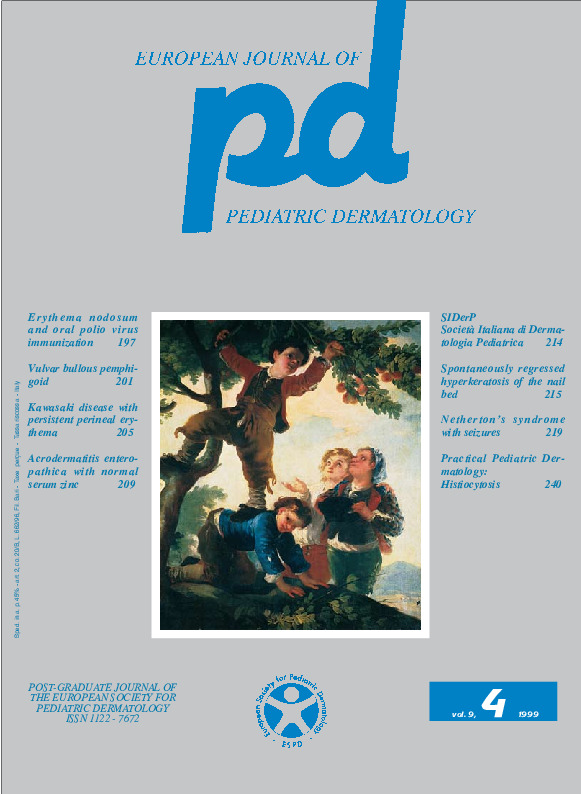Kawasaki disease with persistent perineal rash.
Downloads
How to Cite
Selvaag E., Weismann K. 1999. Kawasaki disease with persistent perineal rash. Eur. J. Pediat. Dermatol. 9 (4):205-8.
pp. 205-8
Abstract
Kawasaki disease or mucocutaneous lymph node syndrome is a febrile, exanthematous disease of children with potentially fatal complications due to coronary aneurysms that occlude or rupture. The diagnosis is based on typical clinical features, consisting of major symptoms and signs as follows: fever lasting at least 5 days, skin eruption, ocular and oral changes, and lymphadenopathy. The prognosis is largely dependent on the cardiac findings and early diagnosis. The treatment of choice is intravenous gammaglobulin and salicylate. We present a one-year old boy with a typical clinical picture of Kawasaki disease and in addition a perineal rash often seen in this condition. He was treated with intravenous gammaglobulin. The clinical and laboratory findings returned to normal within weeks.Keywords
Kawasaki disease, Perineal rash, Immunoglobulin

